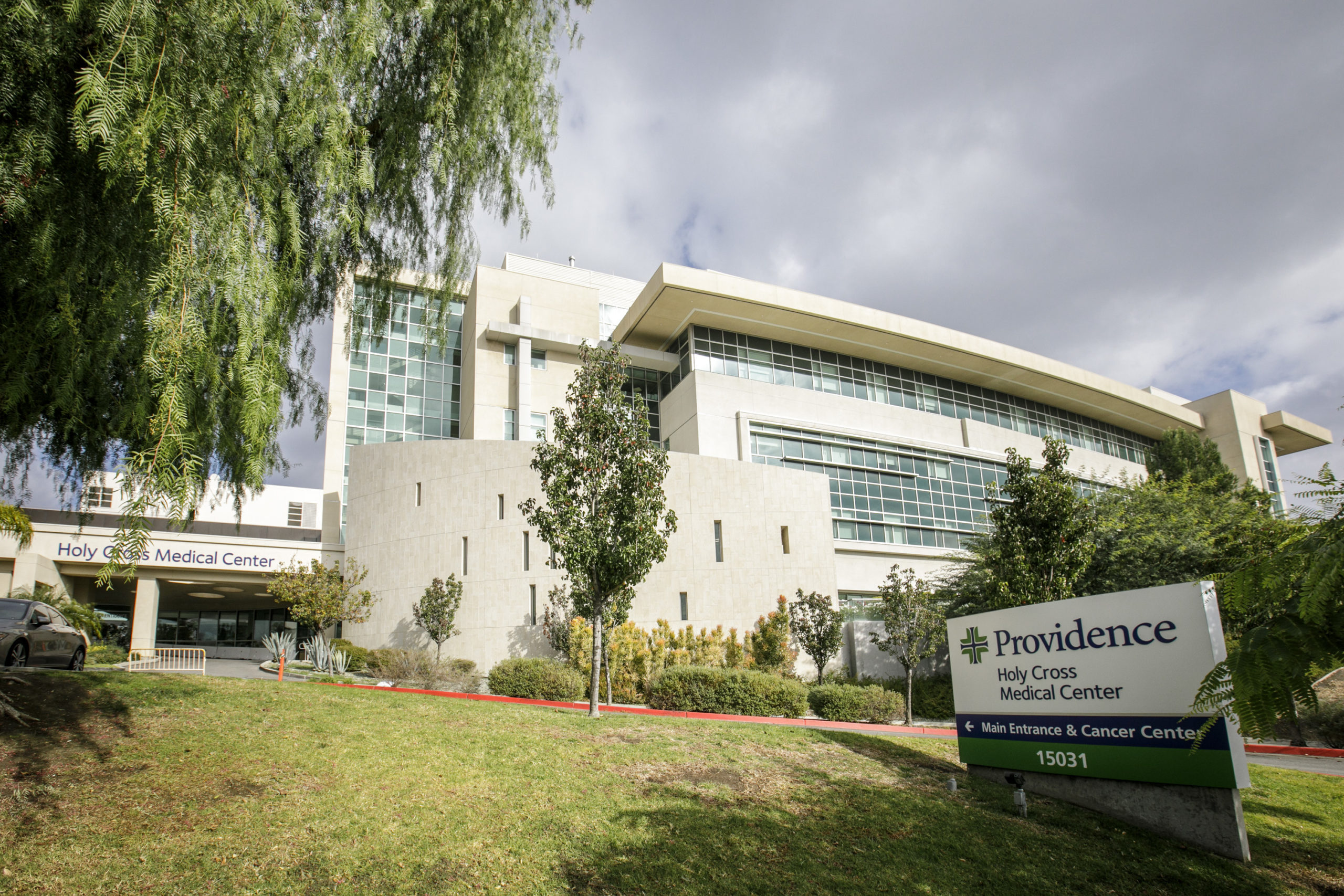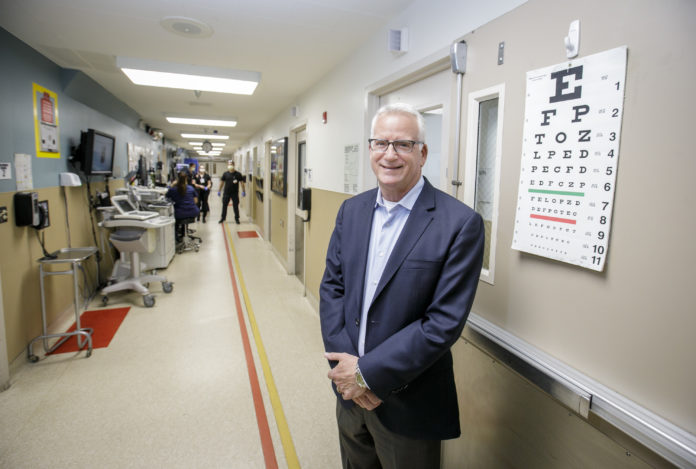Recovery from the financial wrath brought on by the Covid-19 pandemic will likely continue to be a long-term ordeal for local hospitals still burdened with personnel shortages, supply chain issues and significant operating losses.
Dr. Bernie Klein, the chief executive at Providence Holy Cross Medical Center in Mission Hills, called the issues facing hospitals a “perfect storm” that has never been seen before. Klein has worked with the Providence Health & Services organization for about 17 years and previously served as the chief medical officer for Providence Holy Cross.
Providence has San Fernando Valley locations in Tarzana and Burbank in addition to its Mission Hills location.
According to Klein, the staff shortages that began in the throes of the pandemic have persisted in several different sectors because of a mixture of early retirements, burnout and rise in popularity of travel nurse positions. Travel nurses take temporary nursing positions in understaffed regions and saw their usage go up when the Covid-19 pandemic took hold in 2020.
“There was a while there during the pandemic where travel (nurses) were making three, four times what they can make working as an employee in one of our hospitals,” Klein said. “That has come down quite a bit, but there still are certain positions where travel nurse presence is really high.”
Positions that are still hard to fill currently include nighttime labor and delivery nurses, ICU nurses and emergency room nurses, according to Klein. With more open positions in the field, nurses who have stuck around in hospital settings have demanded higher wages, which Klein listed as another challenge.
“You’ve got continued supply chain issues, and inflation in supply chain and medications, just like you see at the supermarket,” Klein said. “And at the same time, Providence has investments to help make sure we’re secure and can ride these ups and downs, but investments have gone down.”
Losses mounting
Providence and other hospital systems in the United States are experiencing significant losses, according to Klein, who noted that government reimbursements are not matching the rate of financial decline.
In Providence’s 2021 financial results, the health care company reported a 10% increase in salaries and benefits, as well as a net operating loss of $714 million. Providence also reported far less government aid last year with $313 million in CARES Act funding, a 67% decrease from 2020.
Klein’s best estimation for the time needed to recover from lingering staffing and supply chain issues is two years, an outlook shared by Dr. Robert Pretzlaff, the senior vice president, chief medical officer and chief clinical officer at Henry Mayo Newhall Hospital in Valencia.
“There’s a nationwide nursing shortage and it was a nationwide nursing shortage before (the pandemic) hit,” Pretzlaff said. “The pandemic just exacerbated it. Physicians are the same story as nurses, so we have to do something at a national level to address these needs.”
Henry Mayo, a 356-bed, not-for-profit community hospital and trauma center, has had to use a significant amount of temporary staffing, which carries with it a premium cost. Pretzlaff added that backfilling positions that Henry Mayo has lost has been a great concern.
To tackle the backfilling and the reduction of temporary staffing, the hospital has increased recruiting and training programs and expanded orientations for nurses who have recently graduated. Pretzlaff noted College of the Canyons as one of the educational institutions that Henry Mayo has worked closely with.
According to data released from the American Association of Colleges of Nursing in April, student enrollment in entry-level baccalaureate nursing programs increased by 3.3% last year despite concerns that the pandemic might discourage people from entering the profession.
Supply chain effects on Henry Mayo’s costs have also been an issue.
“In terms of the supply chain, the cost of drugs, equipment and the like, all those have gone up,” Pretzlaff said.
Another factor harming finances has been sicker patients, which means longer hospital stays and more intensive resources needing to be provided by hospitals, according to Klein.
Murtaza Sanwari, senior vice president and area manager at Kaiser Permanente Woodland Hills, echoed Klein’s observation. Sanwari wrote in an email to the Business Journal that increased demand for care — along with Covid testing volumes, staffing challenges and bringing in contract staff — has challenged the hospital financially.
What has gone regional hospitals’ way is their preparedness for surges in illnesses such as the flu, Covid and respiratory syncytial virus.
“We’re very prepared and have the supplies in order to manage another (Covid) surge,” Sanwari wrote.
Fully prepped

Sufficient stock of personal protective equipment is no longer the problem it was near the start of the pandemic, according to Sanwari.
Edward Mirzabegian, the chief executive of Antelope Valley Medical Center, also reported no issues with personal protective equipment. “The last two years have provided us the experience needed and the hospital is well versed on what to do in the event of another surge,” Mirzabegian wrote in an email.
On Nov. 28, Los Angeles County recorded 5,388 new Covid-19 cases and a seven-day average of 2,200 cases. The last time a surge occurred in the county was in January, when seven-day averages skyrocketed to more than 41,000 cases.
Internationally, optimism about the pandemic’s potential end has increased. World Health Organization Director-General Tedros Adhanom Ghebreyesus said in a September press conference that, “We are not there yet. But the end is in sight.”
The health care leaders interviewed for this story shared the same cautious optimism.
Klein said the prevalence of the virus had lessened, but added that it was important to remember how stubborn it is, referring to the virus’ capacity to mutate.
Steven De Vita, area medical director and chief of staff at Kaiser Permanente Panorama City Medical Center, wrote in an email that the hospital is thankful the number of Covid patients requiring hospitalization is lower today. However, he added, newer variants are resistant to some of the hospital’s previous treatments.
“As our weather changes and we head into winter, historically, more people gather indoors, and the number of Covid and Influenza cases will rise again, which will increase hospitalizations,” Patricia J. Clausen, senior vice president and area manager at Kaiser’s Panorama City Medical Center, wrote in an email.
